This week, The Reload was the first to report exactly how many pistol-brace-equipped firearms the ATF received registration applications for. And, as anyone who reads The Reload regularly may have already suspected, the number was quite low.
Just over a quarter of a million braced guns have been put in for registration. That may sound like a lot, but it’s just eight percent of the lowest-end estimate the ATF itself published in the lead-up to the ban. It’s a mere 0.6 percent of the high-end estimate the Congressional Research Service put out.
The limited compliance isn’t surprising when you look at even just the recent history of attempts to force gun owners to turn over or even just register their firearms and accessories. The registration effort in New York after it passed the SAFE Act in 2013 was similarly abysmal. New Jersey’s attempt to ban all magazines that hold more than 10 rounds saw literally nobody turn in a magazine to the state police.
The latest effort may end up serving as just another reminder that confiscation efforts aren’t practical.
One thing that is practical, if a bit confusing, is the effect of the numerous injunctions issued against the brace ban by federal judges this week. The prospects of the multiple cases against the ban may have even helped contribute to the mass non-compliance. But what exactly do the injunctions do and who is covered? I do my best to answer those questions.
Beyond the breaking news that affects millions of Americans, we also have Contributing Writer Jake Fogleman zooming way in on a case that affects just one in particular. He looks at a recent self-defense shooting in New York City and how onerous gun-permitting laws may see an otherwise innocent man sent to prison for the rest of his life after lawfully defending himself.
Plus, author Radley Balko joins the podcast to explain the big problems with firearms forensics. And Jake adds to his gun collection as I work on my concealed carry mechanics.
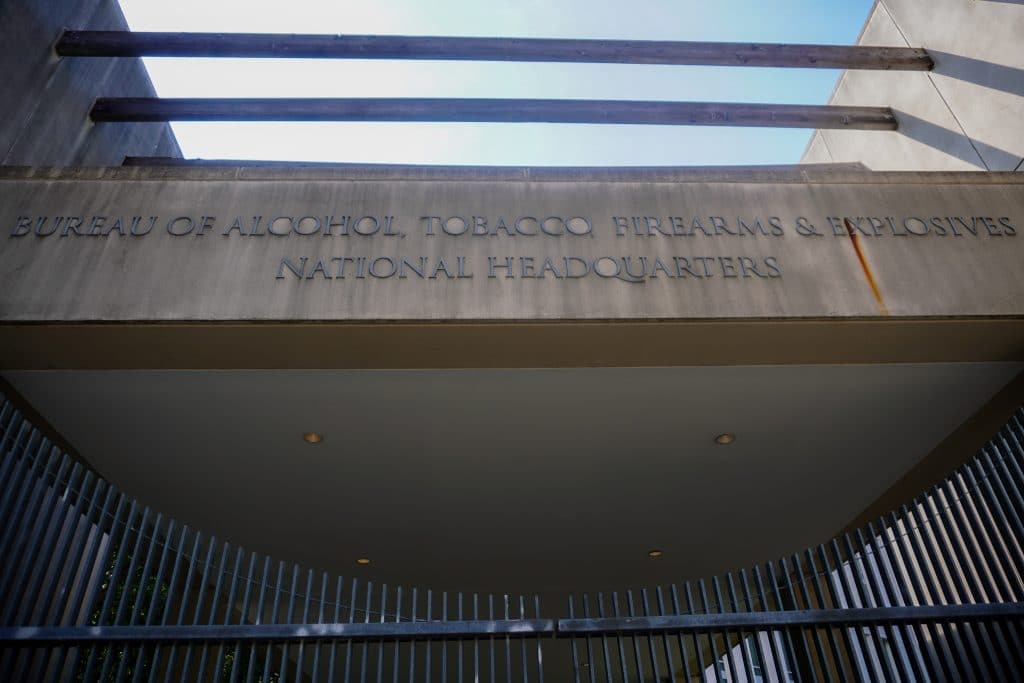
ATF Says a Quarter Million Guns Registered Under Pistol-Brace Ban
By Stephen Gutowski
Only a fraction of the guns affected by the ATF’s new rule were registered with the agency during the four-month grace period that ended this week.
The ATF told The Reload on Friday it has received just over a quarter million applications to register pistol-brace-equipped firearms. Registering the affected guns was one path toward avoiding possible criminal punishment for possessing the guns under the National Firearms Act of 1934 (NFA) after the agency implemented a rule reclassifying the firearms as subject to NFA restrictions. The ATF waived the tax requirement for registration to encourage owners to comply before the deadline.
“The final rule provided possessors of such firearms the option to comply with the registration requirements of the National Firearms Act through a tax-free process using either the ATF eForms System or a paper application process with a deadline for such applications of 11:59 PM (ET) on May 31, 2023,” Erik Longnecker, Deputy Chief of the ATF’s Public Affairs Division, told The Reload. “As of June 1, 2023, ATF received 255,162 applications for tax-free registration.”
That number represents just a fraction of the braced guns believed to have been sold in the decade since the ATF first classified a version as outside the scope of the NFA. In the impact assessment for the rule, the ATF estimated that three to seven million devices exist. However, the Congressional Research Service puts the number much higher at somewhere between 10 and 40 million.
That puts the registration rate for pistol-brace-equipped guns at between .6 percent and eight percent.
Longnecker noted that owners of the affected guns could also comply with the rule by either dismantling the firearms and destroying the braces or turning them over to the ATF. He said the agency does not know how many Americans may have taken those routes.
“ATF is unable to estimate the number of possessors of such firearms that used either of these methods to comply with the final rule,” he said. “Likewise, we have no data currently available for the number of firearms abandoned to ATF.”
The rule has been a source of significant controversy since the ATF submitted it at the behest of President Joe Biden. Gun-rights advocates have labeled it unconstitutional, with every major gun group filing suit against it after it went into effect in January, and some owners have said they would refuse to comply with it. The registration numbers indicate many carried through on that promise.
However, Attorney General Merrick Garland (D.) has continually defended the rule change. He has said the reclassification of braced guns will prevent crimes committed with them by subjecting them to far stricter regulations under the NFA.
“Keeping our communities safe from gun violence is among the Department’s highest priorities,” he said in a statement after the rule was announced. “Almost a century ago, Congress determined that short-barreled rifles must be subject to heightened requirements. Today’s rule makes clear that firearm manufacturers, dealers, and individuals cannot evade these important public safety protections simply by adding accessories to pistols that transform them into short-barreled rifles.”
The NFA regulates certain kinds of short-barreled semi-automatic firearms in the same way it does machineguns and silencers. The law requires Americans to register any “rifles” with a barrel shorter than 16 inches or a “shotgun” with a barrel shorter than 18 inches. The registration is meant to prove the owner paid the $200 tax at the law’s core. The registration process is slow, often taking up to a year to complete. But anyone caught with an unregistered NFA item could be subject to a federal felony charge, which carries up to ten years in prison.
The complicating factor is that the NFA defines “rifles” and “shotguns” as guns that are “designed and intended” to be shouldered. In 2012, the ATF determined the first firearms equipped with pistol braces, which are designed to be strapped to a shooter’s forearm instead of pressed against their shoulder, were not rifles. That meant they were not subject to NFA regulations even if they had barrels shorter than 16 inches long.
Over the next decade, the agency issued a slew of determinations on different versions of pistol braces that further muddied the waters on what was and wasn’t subject to the NFA. A few years after the first determination, during the Obama Administration, the agency issued another claiming that pressing a pistol brace to a shooter’s shoulder constituted a redesign of the device and turned it into an unregistered short-barrel rifle. It later rescinded that declaration under the Trump Administration. The inconsistency led to increasing complaints from owners and the gun industry that the agency was inconsistent and subjective in its determinations.
The new rule, issued under the Biden Administration, purports to be based on more objective criteria but still relies on many subjective measures, including whether the agency believes “indirect marketing” of a brace shows it is meant to be shouldered. In practice, it classifies nearly all pistol-brace-equipped firearms as unregistered short-barrel rifles. With the deadline to register previously-owned braced guns now passed, anyone caught with one could now face charges.
However, millions of gun owners don’t have to worry about that for the time being because of recent injunctions issued by a collection of federal judges. A Fifth Circuit Court of Appeals panel issued an injunction just days before the end of the grace period that blocks the ATF from enforcing its rule against Firearms Policy Coalition members or Maxim Defense customers. A second judge in the same circuit followed up by issuing one for Second Amendment Foundation members. A third did the same for Gun Owners of America members.
“Nothing in this order is to be construed as a comment on the merits of any issue that this panel may ultimately address,” the Fifth Circuit panel wrote in the order. “The limited purpose of this clarification is to preserve the status quo ante to provide what the agency defendants term ‘complete relief’ to the parties and persons within the reasonable scope of the motion panel’s injunction pending appeal.”
That protects many who may have decided not to register or turn in their guns, but it leaves potentially millions more at risk of prosecution. Other suits against the rule outside the Fifth Circuit, such as the one filed in the Eighth Circuit by the National Rifle Association, have yet to see a ruling.
Longnecker said the ATF could not say how the injunctions would affect its enforcement strategy in the short term.
“We are unable to comment on any future actions due to ongoing litigation.”
The Fifth Circuit panel put the case on an expedited schedule when it released its injunction. Hearings in the case are set to begin on June 29th.

Analysis: New York Self-Defense Case Highlights the Perils of Onerous Gun Licensing Laws [Member Exclusive]
By Jake Fogleman
Between gun group activism, movement in state legislatures around the country, and litigation in various courts at every level across the land, gun licensing regimes have been under more scrutiny in the last few years than at any time in the nation’s history. A recent self-defense shooting out of New York City shows why those debates have been so hard fought and what’s at stake.
At around 2 a.m. Wednesday morning, a 65-year-old Queens man identified as Charles Foehner was accosted outside his home by 32-year-old Cody Gonzalez. The 32-year-old allegedly threatened Foehner with a pointed object, later determined to be a pen, and attempted to rob him for cigarettes and money. In response, Foehner allegedly drew a revolver and shot Gonzalez multiple times after Gonzalez lunged at him with the object. Gonzalez succumbed to his wounds at the scene.
In surveillance footage of the incident obtained and released by the New York Post, Foehner can be seen with his gun drawn in one hand while backing away from the hooded Gonzalez, who appears to be feinting lunging movements from side to side with an object in his right hand. Then, the video shows Gonzalez charging at Foehner before the two men leave the camera’s view, at which point, Foehner reportedly pulled the trigger.
According to police, Foehner called 911 to report the incident immediately after the shooting and stayed on scene to cooperate with responding officers. The Queens District Attorney’s Office has not yet made a legal determination as to whether the shooting was lawful self-defense. Foehner was, however, initially arrested and charged with second-degree criminal possession of a weapon and criminal possession of a firearm. That’s because he did not have a permit to possess or carry the revolver used in the shooting, both of which would be required in New York City. Those charges were later significantly increased to 25 counts of criminal possession of a weapon by the DA’s Office after a search warrant served at Foehner’s residence uncovered more than two dozen firearms, six of which Foehner had valid licenses for.
Under New York’s restrictive gun possession laws, each count of unlawful possession is considered a violent felony offense, each with its own mandatory minimum sentence. As such, Foehner could be facing decades in prison. New York City is also one of the few jurisdictions in the country that requires gun owners to obtain a unique license for each individual firearm for the purposes of both purchasing and possessing said firearms. New York City also requires an additional permit for gun owners wishing to carry a firearm publicly.
The entire incident and Foehner’s subsequent charges demonstrate how a simple distinction of political geography can make the difference between an almost cut-and-dried self-defense case and a scenario in which a defender risks spending the rest of his life behind bars due to onerous gun licensing laws.
The formal determination of whether Foehner’s shooting was an act of justifiable self-defense is for the Queens District Attorney to decide—or possibly a jury of his peers if it gets that far. But most people who view the released surveillance footage would likely not take much convincing to conclude that the much older Foehner, cornered in an alley by a hooded mugger wielding a pointed object, was reasonably in fear of facing imminent death or serious physical injury. Even certain family members of the would-be robber have come out and said they do not blame Foehner for his actions.
Foehner had no prior criminal history, according to police. That is also evident because of the fact that he was able to obtain those six valid long gun licenses through New York City’s strict process for doing so. A process that includes an extensive background check, character references, fingerprinting, hundreds of dollars in non-refundable fees, and more. The entire process must be repeated every three years for each firearm a person owns while living in the city.
Considering he reportedly purchased the revolver used in the shooting “in the 1990s,” it’s also plausible that Foehner, at one point, had a valid license for some of his firearms but let them lapse. Or, he might have simply made the ill-fated choice to avoid going through the hassle and substantial expense of regularly licensing and registering his more than two dozen firearms.
As for his decision to carry a firearm without a license, this too is understandable given that until last June, New York City unconstitutionally made it functionally impossible for anyone not wealthy and well-connected to obtain a valid carry permit. And thanks to new state legislation, it has continued that tradition with a replacement system featuring its own constitutionally-suspect and costly hurdles for lawful citizens who want to carry.
According to Foehner, he decision to carry his revolver was not one of ill-intent, but rather one that is quite familar to the tens of millions of Americans who choose to exercise their right to carry a firearm for self-defense.
“Last night I was carrying a firearm because of the way that the city has been in the last three years. I read the crime stats and I see so much crime,” Foehner told the police, according to the New York Post.
Only three states require a valid continuous license to own a firearm, though another eight do require one to purchase certain firearms. Therefore, in 47 states, Foehner would not have faced charges for his firearm collection. In the 27 states that no longer require carry permits, he would not have faced so much as a civil fine for having his revolver on him before he was attacked. But because he was in New York City—which has gun licensing laws so arduous that they routinely take 18 months to 2 years to comply with and have been enjoined in court at least three times in the last year—he faces the legal fight of his life in the months ahead.
And it is that distinction, and the stakes involved when the rubber hits the road, that currently explains the heated push by gun-rights activists against onerous licensing laws.
Come on the Podcast
One of the many perks of a Reload membership is the opportunity to appear on the podcast. We’ve had a lot of people on the show from all kinds of backgrounds. It’s one of my favorite segments since it gives us all a better insight into the community that makes this publication possible. If you want to come on the show, just reply to this email and let me know!
Podcast: Author Radley Balko Explains Why Courts Are Starting to Reject Firearms Ballistic Analysis [Member Early Access]
By Stephen Gutowski
On this week’s episode, The Watch’s Radley Balko details the landmark decision of a Chicago judge not to allow firearm forensic experts to testify in a criminal case.
Balko said the court’s decision comes after years of criticism aimed at the field of forensic pattern matching. He argues many of the techniques made famous on shows like CSI have little scientific basis. Many, he said, are based on little more than the best guesses of examiners who are mainly just eyeballing evidence.
He explained the idea that matching a mass-produced bullet to the mass-produced gun it was fired from, to the exclusion of all other guns, may well be impossible. Or, at the very least, we don’t have advanced enough techniques to pull it off with the level of certainty you’d want for evidence that could put somebody in jail for years or even decades. Indeed, Balko noted, most examiners cited as experts in court are unwilling to even submit to outside tests of their methods.
Plus, Contributing Writer Jake Fogleman and I talk about how far the injunctions against President Biden’s pistol-brace ban extend. Jake also tells us about his latest rifle purchase, which is a bit of a throwback. And I give an update on how I’m liking the Phlster Enigma and appendix carry.
You can listen to the show on your favorite podcasting app or by clicking here. Video of the episode is also available on our YouTube channel. Reload Members get access on Sunday, as always. Everyone else can listen on Monday.
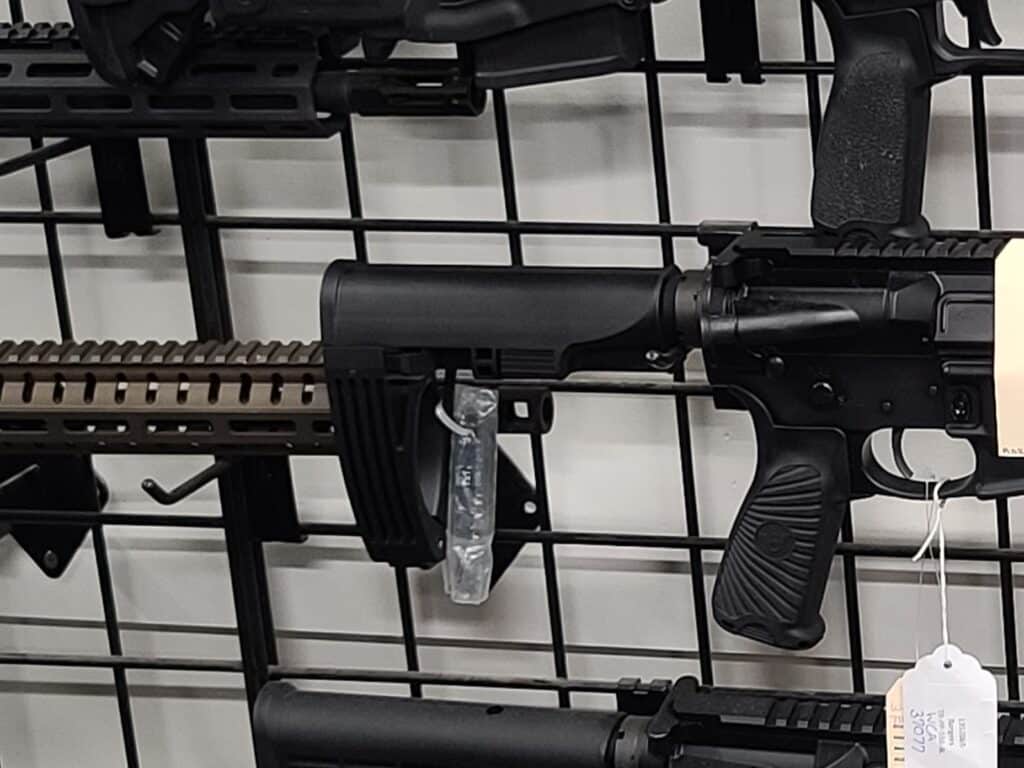
Analysis: What the Injunctions Against Biden’s Brace Ban Actually Do [Member Exclusive]
By Stephen Gutowski
Three federal court judges and one appeals panel have now issued injunctions against President Joe Biden’s pistol-brace ban. Worse for him and the ATF, the judges have clarified those injunctions extend to millions of members of a collection of gun-rights groups. However, they don’t extend to everyone.
This is a clear setback for Biden, the brace ban, and his larger effort to enact new gun restrictions through executive actions. But it isn’t a total win for gun-rights activists.
On Wednesday, three different federal courts released orders saying the ATF could not enforce the ban. They enjoined the agency against arresting the named plaintiffs in the case over the rule. The fact that three major gun-rights groups were named plaintiffs in those cases complicated things a bit. At first, it was unclear whether members of the Firearms Policy Coalition (FPC), Second Amendment Foundation (SAF), and Gun Owners of America (GOA) were covered by the injunctions.
FPC and SAF filed motions asking the courts to clarify shortly after the rulings came down, and the courts did. First, a Fifth Circuit panel said its injunction in Mock v. Garland extends to FPC’s members. Then Judge Jane J. Boyle said her injunction extends to SAF members. Immediately after that Judge Drew B. Tipton issued a similar injunction for GOA members. Finally, Judge Matthew Kacsmaryk issued an identical order for Wisconsin Institute for Law & Liberty in Britto v. ATF.
So, where does that leave things?
One fact to notice about all of these injunctions is where they were issued: the Fifth Circuit. That ruling from the three-judge appeals panel is what drove the rest of these rulings. The district court judges were directly and explicitly following the lead of the Fifth Circuit panel as they are supposed to do.
“The Court finds the same relief afforded to the Mock plaintiffs is appropriate for the private Plaintiffs in this case—Gun Owners of America, Inc., Gun Owners Foundation, and Brady Brown,” Judge Tipton wrote in Texas v. ATF. “This is because the motion in Mock and the Motion before this Court are substantially similar. Both motions seek an injunction enjoining enforcement of the Final Rule on the grounds that it violates the Administrative Procedure Act and the Second Amendment. And while the Plaintiffs here raise some arguments that were not raised in Mock, the resolution of that appeal will almost certainly affect, if not control, the Court’s decision on Plaintiffs’ Motion.”
The panel also rejected a request to expand the injunction beyond the plaintiffs named in the suit because it could constitute a nationwide ruling, which several Supreme Court justices have come out against lower courts issuing in recent years.
“Any relief beyond what is explicitly requested, which arguably would be tantamount to a nationwide injunction, is DENIED,” the panel wrote.
So, the district judges followed suit and denied any injunctions that went beyond the named plaintiffs. Similarly, Judge Tipton denied a request to extend the injunction to everyone in the state of Texas.
That means millions of gun owners who are members of the named gun-rights groups are protected from arrest over possession of unregistered pistol-brace-equipped firearms, FPC claims that even includes members who’ve joined after the injunction was issued. But it also means many more millions remain vulnerable.
Nobody knows exactly how many braces have been sold in the decade since the ATF first declared their use didn’t turn a pistol into a short-barrel rifle subject to National Firearms Act (NFA) regulations (before changing its mind last year at the behest of President Joe Biden). The Congression Research Service estimates there are between ten and 40 million of the devices in civilian hands. The ATF puts the number somewhere between three and ten million. So, there’s at least agreement the number reaches into the millions.
The ATF has yet to respond to a request for how many braced guns were registered during the amnesty period that ended on Thursday. But it’s likely that number represents only a small fraction of the total affected by the ban, judging by how poorly previous registration or confiscation efforts have gone in places like New York or New Jersey. That means there are probably scores of Americans with what the ATF now considers an unregistered NFA item, a crime punishable by up to ten years in federal prison.
And, while the injunctions issued this month protect some of the most prominent gun-rights groups, members of the nation’s largest gun group remain at risk. That’s because the Fifth Circuit is not the only place where challenges to the pistol-brace ban have been filed. The National Rifle Association, alongside 25 Republican governors and the largest maker of pistol braces, filed FRAC v. Garland in the Eighth Circuit. The case has been fully briefed, and the plaintiffs asked for similar relief to what those in the Fifth Circuit have received, but no ruling has been handed down to this point.
The Eighth Circuit could rule in the NRA’s favor at any time. But Fifth Circuit was always the most fertile ground for this sort of challenge, which is probably why so many cases were filed there. That’s because the full Fifth Circuit has already struck down a similar executive-branch ban against bump stocks and established a circuit-wide precedent that the ATF can’t bring criminal cases against Americans in situations where they have muddied the interpretation of federal firearms laws by either stretching them to include infractions that aren’t part of the written statute or flip-flopping on how it thinks the statute should apply. That makes claims the ATF violated the Administrative Procedures Act or the rule of lenity with its brace ban easier to digest for Fifth Circuit judges since they can look to the circuit’s ruling in Cargill v. Garland as precedent.
At this pace, the Fifth Circuit may even deliver a ruling on the merits before courts in other circuits weigh in at all. Since the ATF’s deadline for registration of braced guns has now passed without judges in those other circuits getting involved, there aren’t many other key dates that could force their hands coming up anytime soon. Meanwhile, the Fifth Circuit panel has already set an expedited hearing schedule that starts arguments on the merits before the end of the month.
With the panel already agreeing that a preliminary injunction is necessary because the ban is likely unconstitutional, it’s not difficult to forecast the outcome of the case on the merits. But, even if the panel strikes down the ban as unconstitutional and the full court agrees on appeal, the nature of the ruling is likely to remain as limited as the preliminary injunctions have been.
In fact, there’s some reason to think the full court may take issue with including scores of people from all over the country as named plaintiffs by virtue of their purchases from one of the parties in the case.
“One member of the merits panel would not clarify the motion panel’s order to extend the injunction to ‘customers,’” the Fifth Circuit panel wrote in a footnote. “The motion panel’s injunction was limited ‘to the Plaintiffs in this case.’ There is no authority in the motion panel’s order to extend the injunction to an infinite number of non-parties to this case on the theory that, for full relief to be afforded to the plaintiffs, the plaintiffs must be permitted to sell products to an undefined set of downstream purchasers. Full adversary briefing will assist us to confirm our court’s equitable powers under the Constitution.”
Or, even if the Fifth Circuit is alright with that situation, the Supreme Court may not be. Which may elevate the importance of the cases in other circuits even further. Of course, gun-rights advocates would rather be in a situation where the edges of an injunction against the pistol-brace ban are questioned than not have an injunction at all.
That’s it for now.
I’ll talk to you all again soon.
Thanks,
Stephen Gutowski
Founder
The Reload




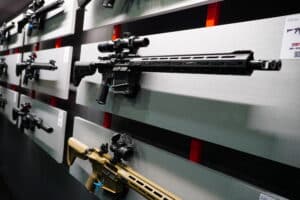
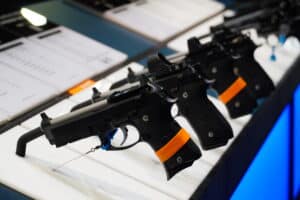
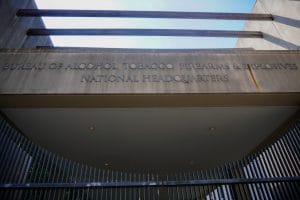

Only Members can view comments. Become a member today to join the conversation.